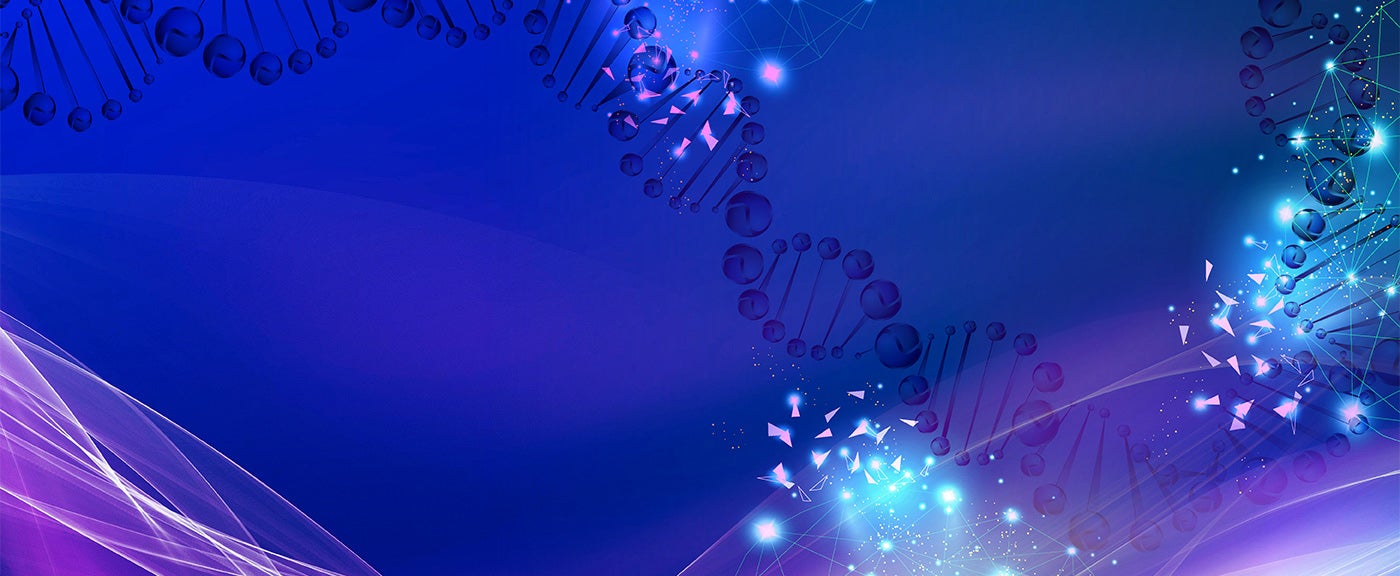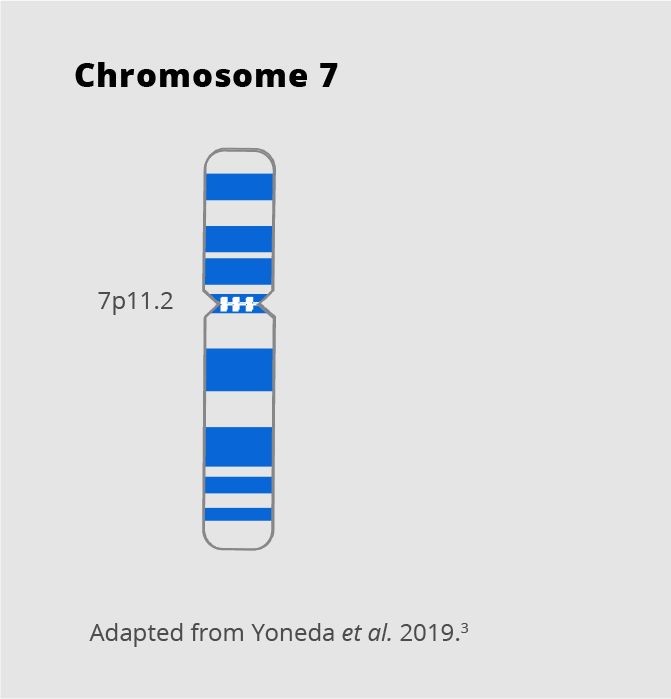
Discovering EGFR sensitizing mutations that predict response1-6
One of the most potent oncogenes that is commonly altered in patients with NSCLC1
The discovery of the activating EGFR mutations and their evolving use as predictive and prognostic therapeutic biomarkers continues to improve patient outcomes in advanced NSCLC.2
EGFR mutations are involved in NSCLC pathogenesis by the stimulation of downstream signal transduction that leads to cell proliferation and inhibition of apoptosis.3
The EGFR gene is located on the short arm of chromosome 7 at position 11 (7p11) and comprises 28 exons.3,4 Mutations in the EGFR gene commonly occur between exons 18 and 21, which encode for part of the intracellular EGFR TK domain.5

Approximately 90% of EGFR sensitizing mutations are exon 19 deletions and L858R point mutations on exon 21, and are correlated with favorable response to targeted EGFR TKI therapy.5
The most common EGFR sensitizing mutations predict response to targeted TKI therapy, whereas the less common mutations, such as exon 20 insertion and T790M mutation, confer resistance to the same therapies.5,6
LEARN ABOUT RESISTANCE MECHANISMS
EGFR: epidermal growth factor receptor; L858R: leucine to arginine substitution at codon 858; NSCLC: non-small-cell lung cancer; T790M: threonine at amino acid position 790 substituted for methionine; TK: tyrosine kinase; TKI: tyrosine kinase inhibitor.
1. Thomas R, Weihua Z. Rethink of EGFR in cancer with its kinase independent function on board. Front Oncol. 2019;9:800.
2. Tan CS, et al. Treatment approaches for EGFR-inhibitor-resistant patients with non-small-cell lung cancer. Lancet Oncol. 2015;16:e447–59.
3. Yoneda K, et al. Treatment of non-small cell lung cancer with EGFR-mutations. J UOEH. 2019;41:153–63.
4. Jurisic V, et al. Epidermal growth factor receptor gene in non-small-cell lung cancer: the importance of promoter polymorphism investigation. Anal Cell Pathol (Amst). 2018;2018:6192187.
5. Zappa C, Mousa SA. Non-small cell lung cancer: current treatment and future advances. Transl Lung Cancer Res. 2016;5:288–300.
6. Boolell V, et al. The evolution of therapies in non-small cell lung cancer. Cancers (Basel). 2015;7:1815–46.
